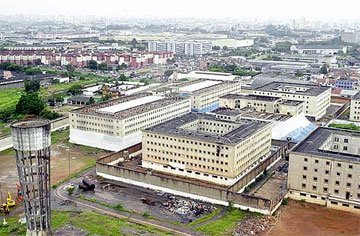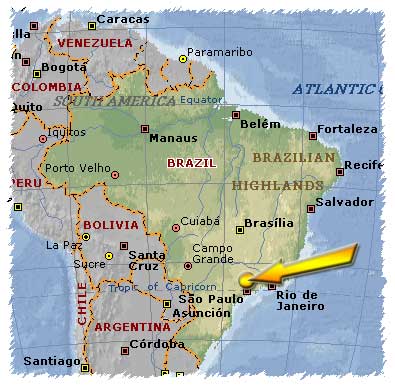<Back to Index>
- São Paulo, Brazil Carandiru Penitentiary, 1920
PAGE SPONSOR


Carandiru Penitentiary was a notorious prison located in São Paulo, Brazil. The prison was designed and built by Samuel das Neves in 1920, when it was considered a model prison to meet the new demands of the 1890 criminal code. It was operational from 1956 to 2002 and, at its peak, was South America's largest penitentiary, housing over 8,000 inmates. In 1992 it was the site of the Carandiru massacre.
Drauzio Varella, a noted Brazilian physician, volunteered as an unpaid physician in Carandiru from 1989 to 2001, in particular to address its AIDS epidemic. He wrote a book, Estação Carandiru (English: Carandiru Station), describing his own experiences there and the dreadful conditions of the inmates. The book was later made into a movie (Carandiru, directed by Hector Babenco), and both were highly regarded by critics and the public.
The prison was demolished on December 9, 2002. One block was left intact to be used as a museum, it is now open to public, accessible via Carandiru Subway Station (Estação Carandiru). Today the Parque da Juventude complex is located on the site of the former penitentiary. The Carandiru Penitentiary is the inspiration for the Penitenciaría Federal de Sona, the prison Michael Scofield is incarcerated in during the third season of the US television series Prison Break. Jorge Aragão refers to Carandiru in his song "O Iraque é Aqui".
The Carandiru massacre took place on Friday, October 2, 1992 in Carandiru Penitentiary in São Paulo, Brazil, and is considered a major human rights violation in the history of Brazil. The massacre was
triggered by a prisoner revolt within the prison. The police made
little if any effort to negotiate with the prisoners before the Military Police of São Paulo State stormed the facility, as the prison riot became
more difficult for prison guards to control. The resulting casualties
were 111 prisoners killed: 102 from gunshots fired by the military
police and nine from stab wounds apparently inflicted by other prisoners
before the arrival of the police. None
of the sixty eight police officers was killed. Survivors claimed that
the police also fired at inmates who had already surrendered or were
trying to hide in their cells. The commanding officer of the operation, Colonel Ubiratan Guimarães, was initially sentenced to 632 years in prison for his mishandling of the rebellion and subsequent massacre. On
16 February 2006 a Brazilian court voided Guimarães' conviction
because of mistrial claims; the court accepted his argument that he was
only following orders. Several
human rights groups labeled the situation as a "step backward" and a
contribution to the culture of impunity regarding police violence in
Brazil. Guimarães, who was also a member of the São Paulo
state legislature, was assassinated in September 2006. The massacre led to consternation amongst other Brazilian inmates, some of whom formed a criminal organization called the Primeiro Comando da Capital (First
Command of the Capital) in 1993. This group is believed to be
responsible for the death of José Ismael Pedrosa, director of the
prison at the time. The prison was demolished on December 9, 2002.